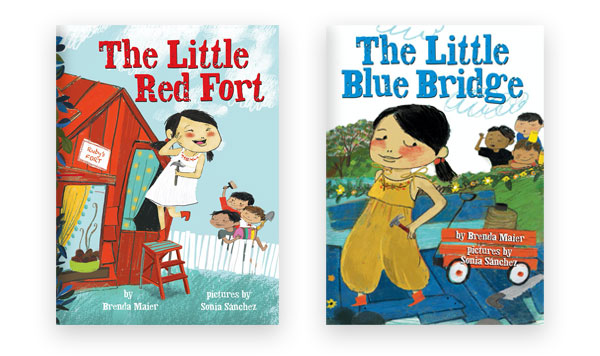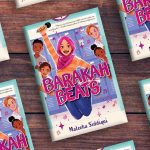As a gifted education specialist, I have classes that span from kindergarten to fifth grade. Even within one class of all gifted students, there’s a range of interests, abilities, needs, and motivation. There’s also a range of spiritual and political beliefs, which at this age, are generally a reflection of the family’s beliefs. This is a strength, and I welcome it.
Recently, I had a seemingly unrelated exchange with a third grader. The student felt the need to explain why she hadn’t read my books. “I don’t read those,” she said. “They’re below my level.” Below her? How did she even get that idea? I wondered. However unintentional, it was likely impressed upon her the way any beliefs are: from her parents, friends, or even her teachers.
I have a passion for picture books. Exchanges like this, coupled with the wedges being driven between segments of our society (which includes children), prodded me to want to do a personal PSA extoling the virtues of picture books for all kids. There are solid instructional and social-emotional reasons to use picture books in the upper-elementary grades and beyond. They allow an entire class to have collective literary experiences, they’re an efficient use of teacher time, and—this is perhaps the most important—for a few minutes, they bring us all together.
As teachers, we simply can’t know the extent of our students’ life experiences. If we make assumptions about their prior knowledge and experiences, there’s an opportunity for missed comprehension. With that in mind, a fifth-grade teacher friend of mine frontloads her school year with a plethora of picture books to provide students with a wealth of shared experiences. Every student gets at least that baseline level of prior literary experiences provided by the bounty of picture books. All year, they continue to read and refer to the books, using them as touchpoints while the students learn to contrast plots, make connections between texts, and learn literary devices. One of my favorite things about providing these shared experiences is that it ensures the text is accessible to all the students. Everyone can succeed and develop a firm foundation for further learning.
Teachers are multitaskers by nature, and picture books can be an efficient use of our instructional time. With so many teaching objectives, it often feels like a race to fit as many of them as you can into the school day. Yet a single picture book can provide opportunities for bite-sized comparisons between texts, sophisticated discussions about layers of meaning, and a sprinkling of novel vocabulary. (I can’t tell you how many of my students didn’t know “traipsing” until we read Mo Willems’ Goldilocks and the Three Dinosaurs.) This efficiency is something I strived for in my newest picture book The Little Blue Bridge (a companion to The Little Red Fort). It manages to simultaneously modernize a common folktale, model problem-solving with STEM, and introduce a couple of new vocabulary words while also whispering to the reader, “You can do anything if you think you can.” Using picture books is an efficient use of instructional time for both students and teachers.

The most important reason to share picture books with older kids (or anyone, really) is that they have the ability to bring the class to the same figurative and literal space. They provide an instant lift and, if not a happy ending, at least you can all share a good belly laugh. Because fiction picture books tend to be brief, you’ll have time to read a range of stories that provoke rainbows of emotions about a range of issues. There’s nothing like a picture book to help model how to handle kindness or compassion, settle the class after a heated debate, and remind students that the classroom is a community. The fact that picture books rely heavily on illustrations also ensures they can provide visible representation of a range of genders, viewpoints, and cultures other than—and including—the readers’ own. Through the lens of a character, students can understand and appreciate differences as strengths and problems as opportunities for solutions—things we hope will translate to their outside-of-school lives.
Maybe you already use picture books regularly with older kids. Maybe you already have a ready response for the students who believe picture books are “below” them. Maybe you already understand the power they have for delivering shared experiences, efficient instruction, and a sense of community. If you do, on behalf of kids, thank you for doing what you do. If you don’t, I hope these thoughts will help you feel more justified and secure in using them, no matter what grade you teach. As for me, I’ve developed a personal habit to help deal with daily stresses. Before school, I slip into the library, read a random picture book, and return to my classroom with a satisfied smile. Picture books offer something for all of us, regardless of “level” or ability.






